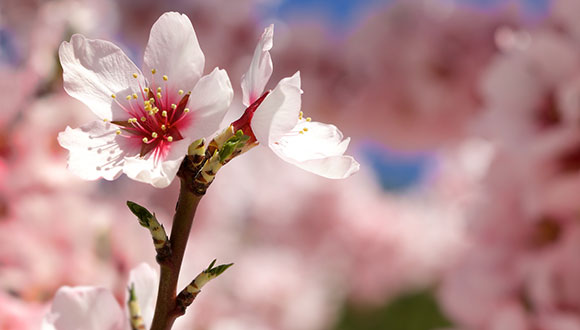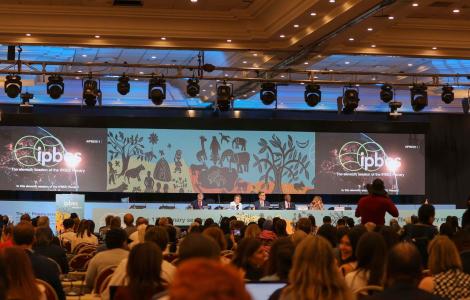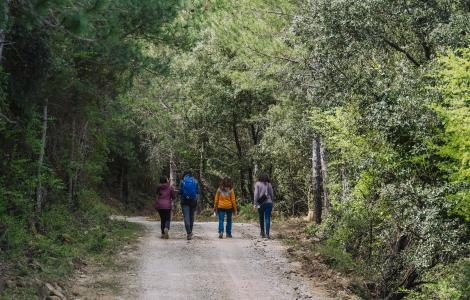#FenoDato seeks citizens to help monitor how climate change is altering nature’s rhythm

Climate experts, botanists, geographers and ecologists from CREAF and the Autonomous University of Barcelona (UAB) will train citizens to monitor seasonal changes which can be observed in nature. This way citizens will be able to help the scientists study the effects of climate change on animals and plants. Flower emergence, the dropping of leaves, or the arrival of certain birds will be some of the changes to be studied. Once trained, citizens will be able to contribute to European and Spanish phenology observation networks.

January 19th 2016. In 2016 CREAF and the UAB will coordinate a new citizen science project designed to study the rhythms of nature. In the project citizens will learn how to gather phenological data and can volunteer to help scientists study the effects of climate change on plants and animals. This science dissemination project, financed by the Spanish Foundation for Science and Technology, will be particularly publicized and broadcast on Twitter, as reflected in its name: #FenoDato.
Phenology is the study of the relationship between climate and changes in the biological cycles of plants and animals. Some key moments in such cycles include florescence, the appearance of insects, and the migration of birds. It is very important for scientists to understand if these phenological phases come early or are delayed. This information will lead to discovery about how plants and animals are responding to climatic changes, and it also allows making predictions with practical applications, such as the management natural areas or crops.
#FenoDato aims to train a group of phenology observers capable of monitoring the rhythm of nature and whose input will feed large international and national phenology monitoring networks. These participants will be encouraged to observe nature at length and carefully note the date and place in which the observed species has experienced a change in their state: bird migrations, plant florescence, fruit ripening, hibernation, and the fall of leaves are some examples of key phenological moments. Once this information is in hand, they will be able to send it using the online platform for observation submittal which is linked to Twitter.
It is very important for scientists to understand if these phenological phases come early or are delayed. This information will provide them with clues about how animals and plants are responding to climatic changes.
The system and the methodologies for data collection will follow international standardized criteria and protocols. “FenoDato will work in close collaboration with representatives of the
Phenological Network of Catalonia of the Meteorological service of Catalonia (SMC), the Phenological Network of the Spanish Meteorological Agency (AEmet) and the international network Pan European Phenology DataBase,” says Joan Masó, CREAF researcher coordinating the project. Collected data will be used to make a map of observations which itself will be property of all users, following community-oriented guidelines for open data. In fact, the European Commission is urging that contributions from citizen science projects such as this one be included in the Global Earth Observation System of Systems (GEOSS). This system has at its disposal the data necessary for decision- making on issues related to climate change by to environmental protection departments of key world governments.
For the project, representative species have been selected for their familiarity and ease of identification: almond, poppy, cherry, holm oak, olive, rosemary, Aleppo pine, and swallows, among others. “These species are sufficient for starting the phenological monitoring since they are abundant in Peninsular Spain and they also have phenological phases which can be clearly and unmistakably identified,” explains Miquel Ninyerola, expert in bioclimatology at the UAB.
Climate change is changing the rhythm of nature
In addition to socio-economic repercussions, climate change is also affecting nature. “It is known that the distribution of some species is changing and that the pollinator-florescence system is getting out of sync,” says Miquel Ninyerola, “and over the last few months we’ve seen some very strong and surprising effects: the rhythm of nature is out of sync, the leaves don’t fall from deciduous trees, some species flower early, and bears have stopped hibernating, just to give some examples.”
According to Ninyerola, this year broke many records. It was one of the most hot and dry since record-keeping began at the Fabra Observatory (1914) which is situated near Tibidabo, Barcelona, as a nearby example. “Although it is difficult to make connections between regional events and the El Niño phenomenon, there are indications that this event is actually affecting the climate here. Over the 2014-2015 period, the pattern of El Niño has been similar to or even more pronounced in intensity than in 1997, a year which had a very extreme climatology with a lot of droughts and floods. There is not a consensus in the scientific community about whether climate change is increasing the number of El Niño events, a phenomenon which is produced in decadal cycles. However, there are science-based indications that its intensity is increasing with climate change. A good way to participate in these studies is by recording phenological data as suggested in the citizen application #Fenodato. This way, anyone will be able to contribute information about places which may be out of the reach of meteorological stations which otherwise provide good temporal data series.
Website: www.fenodato.net
Twitter: https://twitter.com/FenoDato
Noticias relacionadas

Una investigación descubre que las raíces de los árboles caducifolios no duermen en invierno

El IPBES publica dos informes para transformar la forma en que nos relacionamos con la naturaleza, conservarla y sobrevivir



